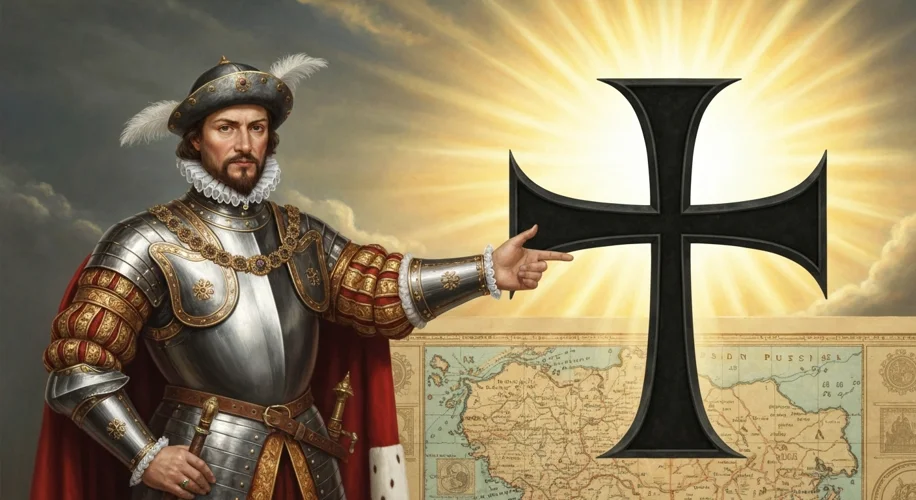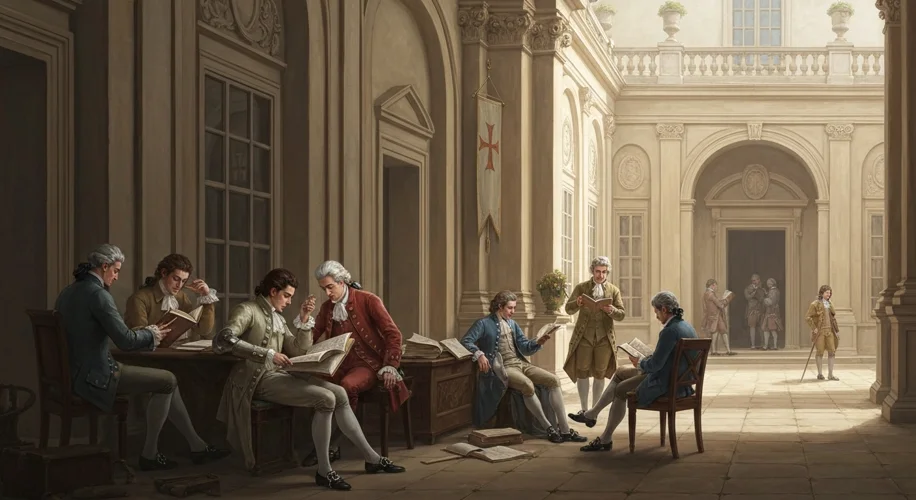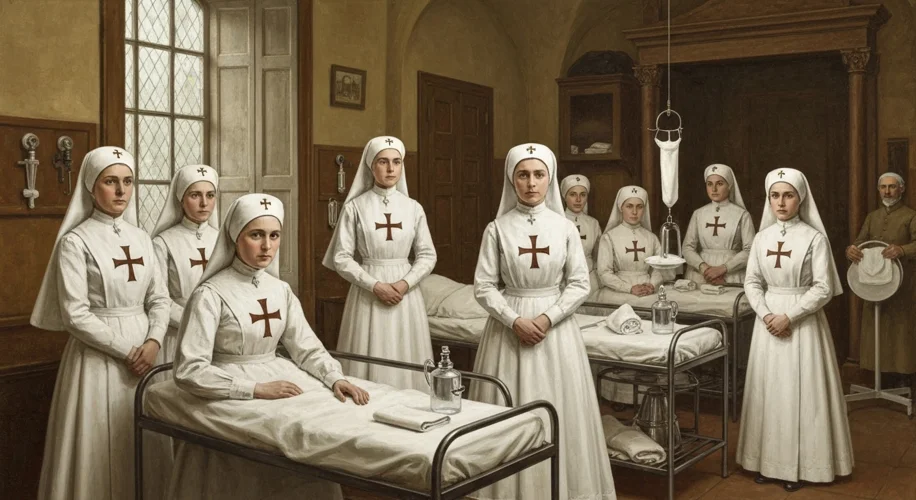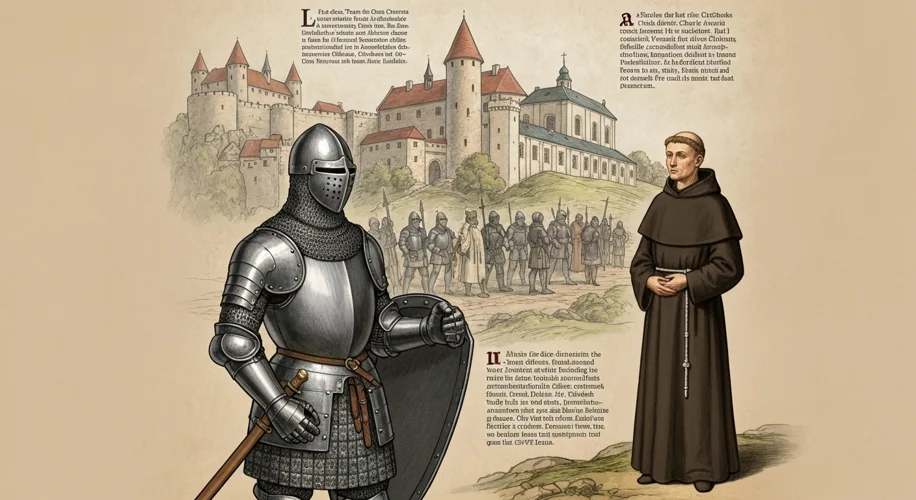The year is 1525. The grand master of the Teutonic Order, Albert of Hohenzollern, stands at a crossroads, not of dusty battlefields and fervent prayers, but of a new world order. The winds of the Reformation have blown across Europe, and Albert, a scion of a Prussian ducal family, makes a momentous decision: he secularizes the Teutonic Order’s Prussian territories, transforming them into the Duchy of Prussia. This act, a seismic shift in the Order’s centuries-old identity, marks not an end, but a dramatic metamorphosis. The Teutonic Order, once a formidable military-religious force, was about to embark on a new, often surprising, chapter of its existence, one that would see it adapt, endure, and even subtly influence the course of European history for centuries to come.
For over three centuries, the Teutonic Knights had been the undisputed masters of Prussia, a militaristic crusading order established in the late 12th century to convert pagan Prussians to Christianity and expand German influence. Their imposing castles, like the magnificent Marienburg (Malbork Castle), were not just fortresses but symbols of their power and piety. Their black crosses on white surcoats were a familiar and often feared sight across the Baltic region. They had fought Lithuanians, Poles, and Tartars, their existence intrinsically tied to warfare and the defense of Christendom, or at least their interpretation of it.

However, by the early 16th century, the Order’s dominance was waning. The Union of Krewo in 1385 had united Poland and Lithuania, creating a powerful rival. The Teutonic Knights suffered a crushing defeat at the Battle of Grunwald in 1410, a blow from which they never fully recovered. The religious landscape of Europe was also fracturing. Martin Luther’s Ninety-five Theses, nailed to a church door in Wittenberg in 1517, ignited a theological firestorm that would consume the old order. Albert, influenced by Lutheran ideas and eager to consolidate his own power, saw an opportunity.
His secularization of Prussia was a pragmatic, albeit controversial, move. He declared himself Duke of Prussia, a hereditary ruler, and converted the Order’s lands into a secular state under the nominal suzerainty of Poland. This effectively dissolved the original monastic and military character of the Order in Prussia. The remaining parts of the Teutonic Order, particularly its holdings in the Holy Roman Empire, were deeply shaken. Yet, the Order was far from extinguished. It retreated to its territories within the Empire, focusing on its remaining commanderies and administrative centers, with its grand master residing in Mergentheim, Franconia.
In the centuries that followed, the Teutonic Order underwent a slow but steady transformation. It ceased to be a major military power, its vast armies replaced by a more administrative and charitable focus. It became a more aristocratic institution, with membership increasingly restricted to nobles, often from prominent German families. The ideal of the warrior monk gave way to that of the pious nobleman serving God and the Emperor through good works and governance.

Despite its diminished military might, the Order maintained significant influence. Its commanderies were important economic and social centers, managing lands, providing alms, and supporting local communities. The Knights continued their charitable work, running hospitals and caring for the poor and sick, a legacy that persists to this day. They also played a role in the patronage of arts and sciences, their revenues supporting churches, monasteries, and scholarly endeavors.
Throughout the tumultuous periods of European history – the Thirty Years’ War, the rise of Prussia, the Napoleonic Wars, and the unification of Germany – the Teutonic Order navigated these complex currents with remarkable resilience. It lost many of its territories during the Napoleonic era, particularly after the Reichsdeputationshauptschluss of 1803, which reorganized the Holy Roman Empire. The Order’s vast landholdings were significantly reduced, and its very existence seemed precarious.
However, the Order’s adaptability proved its strength. After a period of dormancy, it was revived in the Austrian Empire in 1834, with a renewed focus on its spiritual and charitable missions. It shifted its center of operations to Vienna, Austria, and continued its work in healthcare and social welfare. The black cross, once a symbol of conquest, became increasingly associated with compassionate care and Christian charity.

By the turn of the 20th century, the Teutonic Order was a respected charitable organization, deeply embedded in the social fabric of the Austro-Hungarian Empire and beyond. The World Wars brought new challenges. While the Order was largely spared the direct confiscations of the Nazi era due to its charitable nature and predominantly German membership, the post-World War II landscape was drastically altered. Austria became a republic, and the Order had to adapt to a new political reality.
In the latter half of the 20th century, up to the year 2000, the Teutonic Order continued its charitable activities. It ran hospitals, homes for the elderly, and provided aid to those in need. Its membership remained composed of knights and sisters dedicated to religious service and charitable work, a testament to its enduring spiritual core. The grand master’s seat eventually returned to Germany, further reflecting its repositioning. From the martial might that carved out a state in Prussia to the quiet dedication of caregivers in modern hospitals, the Teutonic Order’s post-secularization journey is a compelling narrative of adaptation, endurance, and the persistent power of an ancient ideal, reshaped for a changing world.

